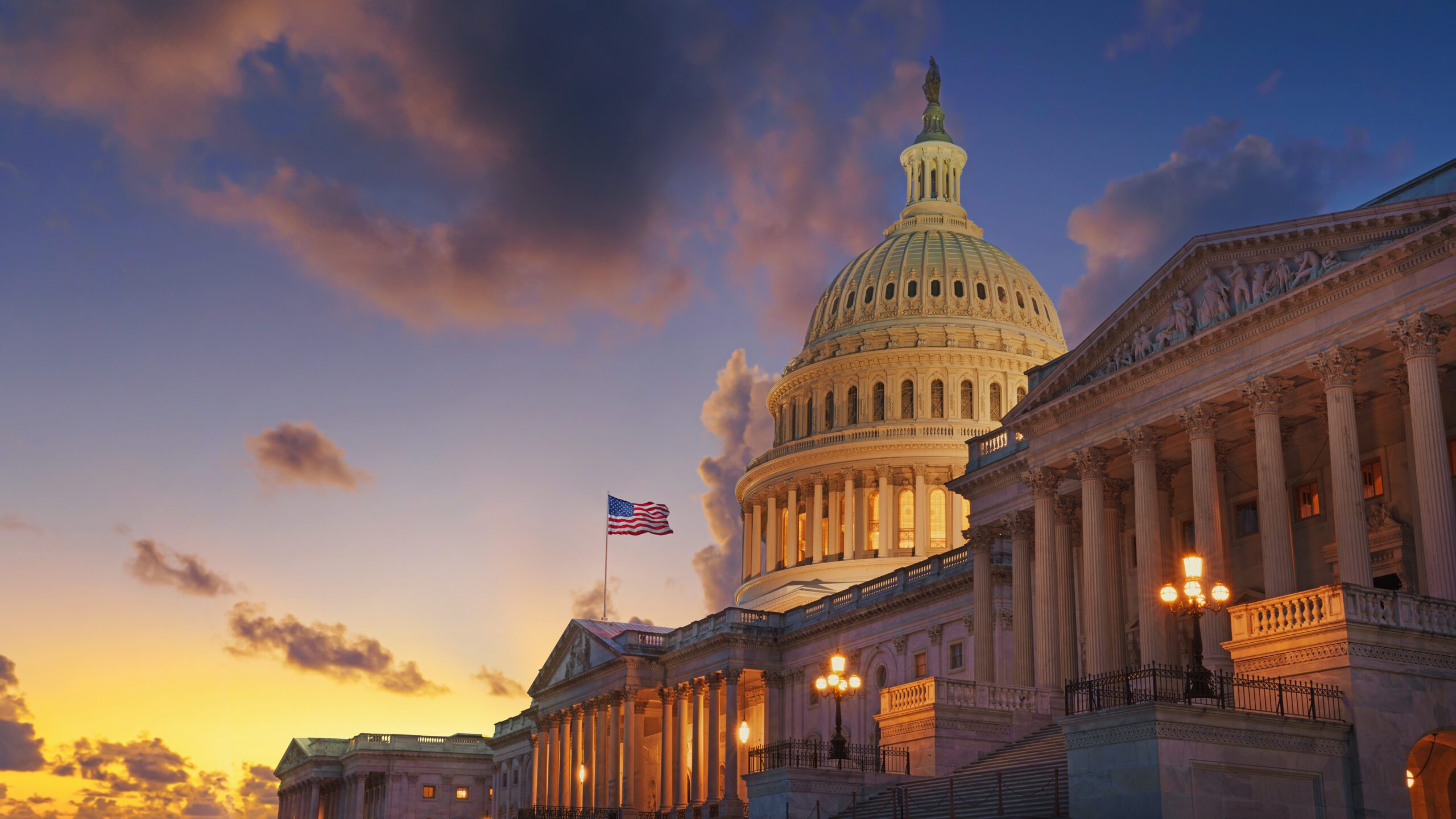It’s one and it’s big, though beauty is in the eye of the beholder. Many provisions of the One Big Beautiful Bill Act (OBBBA) flow through to state taxA tax is a mandatory payment or charge collected by local, state, and national governments from individuals or businesses to cover the costs of general government services, goods, and activities.
codes, confronting state legislators with important questions about which to keep and which to scrap.
But whereas the temporary deductions (for qualified tips, overtime premium pay, and auto loan interest), which only flow automatically to a few states’ tax systems, reduce revenues without generating much economic benefit, the new law’s provisions about the expensing of corporate investment affect most states and possess a compelling economic justification. However states choose to respond to other provisions of the bill, they should conform to these pro-growth provisions, which represent a marked improvement in the corporate tax code.
Because corporate income taxes are intended to be a levy on net income (profits), most business expenses are deductible. That includes compensation, the cost of goods sold, and other ordinary business expenses. But when it comes to capital investments, which lawmakers frequently say they want to encourage, the deductions can be somewhat stingy. Instead of claiming an immediate deduction for the cost of new investment, businesses often see their deductions amortized over many years, according to depreciationDepreciation is a measurement of the “useful life” of a business asset, such as machinery or a factory, to determine the multiyear period over which the cost of that asset can be deducted from taxable income. Instead of allowing businesses to deduct the cost of investments immediately (i.e., full expensing), depreciation requires deductions to be taken over time, reducing their value and discouraging investment.
schedules which vary in length depending on asset class.
Depreciation makes sense in accounting. If a company buys a $10 million piece of equipment, it is not $10 million poorer. It has less cash on hand, but it has a piece of equipment worth a similar amount. Yet there’s no way in which the money invested in the equipment is profit, any more than the amount spent on compensation is. Depreciation schedules have no place in well-structured tax policy.
The OBBBA makes four significant changes around business expensing, all of which are relevant to states as well. This piece outlines those provisions, indicates which states are in line to incorporate them into their own tax codes, and provides state-by-state estimates of revenue impacts. The four business expensing changes are as follows:
The § 168(k) full expensingFull expensing allows businesses to immediately deduct the full cost of certain investments in new or improved technology, equipment, or buildings. It alleviates a bias in the tax code and incentivizes companies to invest more, which, in the long run, raises worker productivity, boosts wages, and creates more jobs.
provision for machinery, equipment, and certain other tangible property is restored and made permanent.
The recent shift to amortizing research and experimental expenditures under § 174 is reversed, restoring immediate cost recoveryCost recovery refers to how the tax system permits businesses to recover the cost of investments through depreciation or amortization. Depreciation and amortization deductions affect taxable income, effective tax rates, and investment decisions.
for research and development costs.
A new § 168(n) is created, providing first-year expensing for qualified production property (e.g., factories).
The cap on the § 179 expensing deduction for small businesses is raised from $1 million to $2.5 million.
Under the Tax Cuts and Jobs Act (TCJA) of 2017, corporations were temporarily permitted to fully expense certain capital investments in the first year, but that provision was phasing out. Another much more modest expensing provision, primarily targeted at small businesses but available to pass-throughs as well as C corporations, had its annual limit raised from $25,000 to $1 million. And, as a pay-for in the back half of the 10-year budget window that most lawmakers expected to be eliminated, the TCJA required research and development expenditures to be capitalized and amortized beginning in 2022, a departure from the prior ability of businesses to deduct these costs immediately.
The § 168(k) change is slated to impact 17 states. The higher § 179 cap is ultimately in line to flow through to 38. And the restoration of § 174 expensing and the creation of a new § 168(n) cost recovery provision will ultimately show up in virtually all states’ tax codes.
These provisions come at a cost of revenue, just as the new deductions for qualified tips, overtime premium pay, and auto loan interest do for the smaller number of states in line to conform to them. But unlike those new deductions, these capital expensing provisions also have a strong economic justification. They are pro-growth, they make the corporate tax code more neutral and economically efficient, and, for § 168(k) and § 174, they represent a return to the policies that conforming states were already following until a few years ago.
168(k) Bonus DepreciationBonus depreciation allows firms to deduct a larger portion of certain “short-lived” investments in new or improved technology, equipment, or buildings in the first year. Allowing businesses to write off more investments partially alleviates a bias in the tax code and incentivizes companies to invest more, which, in the long run, raises worker productivity, boosts wages, and creates more jobs.
: Fifteen states offer § 168(k) first-year expensing to the same degree that the federal government does. Two more offer a small fraction of the first-year amount allowed under the Internal Revenue Code, while another three have established permanent full expensing regardless of federal policy. The 17 states conforming fully or fractionally to § 168(k) would see their first-year expensing restored to where it stood from late 2017 through the end of 2022, after which it began phasing out, standing at 40 percent first-year “bonus depreciation” in 2025 prior to the enactment of the OBBBA. As we have noted previously, full expensing represents sound tax policy, and this is a provision to which states are prudent to conform. States that have decoupled from § 168(k) should consider conforming to the restored federal policy.
174 Research & Experimentation Cost Recovery: Requiring five-year amortization of research and development costs under the § 174 was never really intended to go into effect. That gimmick (a “cost savings” in the TCJA that was not meant to be realized) is fair game for criticism, but the research & experimentation (R&E) expensing provision is so popular, and such clearly appropriate policy, that many observers were surprised the capitalization and amortization provision was permitted to take effect in 2022. Corporations have been allowed to deduct R&E expenditures—the IRC’s term for what is generally considered research and development (R&D) costs—in the year in which the expense is incurred since 1954, and every state with a corporate income taxA corporate income tax (CIT) is levied by federal and state governments on business profits. Many companies are not subject to the CIT because they are taxed as pass-through businesses, with income reportable under the individual income tax.
has followed suit. When the federal government shifted to five-year amortization beginning in 2022, 10 states continued to offer immediate expensing of R&E, either through express policy or, as in the case of California, by conforming to a pre-TCJA version of the Internal Revenue Code (IRC). All other states with corporate income taxes followed the federal government’s lead in setting aside the R&E policy that had prevailed for 68 years. By conforming to its restoration, states will be accepting a “cost” compared to the policy of the past three and a half years, but one that was fully baked into their tax code for the better part of seven decades. Any effort to decouple from this provision would be short-sighted.
168(n) Qualified Production Property Deduction: For the first time, the federal tax code will now provide first-year expensing for certain structures. However, the new provision, at § 168(n), is both temporary (expiring after 2028) and largely limited to manufacturing plants. Neutral cost recovery for structures is good policy, and this temporary provision might ultimately become a permanent one. As a temporary policy, though, its economic benefits are not as large as they could be, and the temporary provision will move up the timeline for construction projects in addition to inducing greater construction overall. Still, particularly given the possibility that this provision will be extended or made permanent, it represents an improvement in the tax code, and one with relatively low costs. While § 168(n) is a new section of the tax code, all but four states with corporate income taxes conform to the provisions of § 168 generally, only decoupling (if at all) from specific named provisions, and thus most states would be in line to incorporate the new provision into their own tax codes.
179 Small Business Expensing: Finally, the OBBBA raises the cap on § 179 first-year expensing from $1 million to $2.5 million with inflationInflation is when the general price of goods and services increases across the economy, reducing the purchasing power of a currency and the value of certain assets. The same paycheck covers less goods, services, and bills. It is sometimes referred to as a “hidden tax,” as it leaves taxpayers less well-off due to higher costs and “bracket creep,” while increasing the government’s spending power.
adjustments. (In practice, the $1 million cap was worth $1.25 million in 2025, and the new $2.5 million cap would be adjusted to $3.13 million.) While § 179 comes with a dollar limit, unlike § 168(k), it also has an important place in cost recovery policy, because it is available to pass-through businesses as well as C corporations, and because some assets (including used machinery and equipment and HVAC) are eligible under § 179 but not § 168(k). This provision is only available to small businesses, with benefits beginning to phase out above an investment threshold that rises, under the new federal law, from $3.13 million to $5.0 million under existing inflation adjustments. Most states incorporate the IRC’s cap and phaseout threshold, though 12 adopt their own lower caps, ranging from $25,000 to $500,000.
Without these four expensing provisions, businesses only get the benefit of these deductions over time: for periods as long as 20 years for assets eligible for immediate expensing under § 168(k), and for 39 years for the factories eligible for first-year expensing under § 168(n). That imposes real costs, due to inflation and the time value of money. The present value of a deduction spread over the next 5, 10, 20, or even 39 years is less than the value of receiving the full deduction now. The tax code embeds disincentives for capital investment, and each of these new provisions represents an improvement in the treatment of those investments. For that reason, it makes sense for states to align with them, enhancing the competitiveness of their own tax codes and reducing the tax system’s bias against investment and growth.
Broadly speaking, states use the IRC as a starting point for their own corporate income taxes, which is why these provisions generally flow through to states. There are, however, two sources of disconnect: first, some states conform to an out-of-date version of the IRC, meaning that they won’t incorporate these changes until their conformity date catches up with the effective date of the OBBBA; and second, some states expressly modify or decouple from select provisions, as with the states that decouple from § 168(k) bonus depreciation, or set their own lower caps for § 179 small business expensing. Of course, some modifications also run in the other direction, as with the states that offer 100 percent first-year expensing under § 168(k) regardless of federal policy, or those that maintained § 174 R&E first-year expensing even when the federal government temporarily abandoned it. The change in federal policy has no direct effect on these states, except through the simplifying element of federal policy re-aligning with state policy.
The table below indicates states’ conformity to each of these expensing provisions and notes the state’s conformity status, with a subsequent table providing projected revenue implications. States that offer 100 percent first-year expensing in their own right, regardless of federal policy, are noted. Some have rolling conformity, thus automatically conforming to the newest version of the IRC, while others have static (fixed date) conformity. It should be noted that in most static conformity states, updating the conformity date is typically a pro forma exercise, with a one-year advance adopted by the legislature each year. A few states, however, lag further behind in IRC conformity. States that presently conform to the IRC as it existed as of December 31, 2024, or January 1, 2025, are indicated as “Static – Current,” while those with earlier conformity dates are indicated by “Static – Lagged.” Of course, an update to the conformity date is never guaranteed, particularly after the enactment of significant federal tax changes.
State Conformity with the OBBBA’s Expensing Provisions
Note: A checkmark indicates that a state is in line to conform to a given provision if and when its conformity date aligns with a post-OBBBA version of the IRC. “100%” denotes an expensing provision made permanent at 100% by state lawmakers regardless of federal policy. Source: State statutes; Tax Foundation research.
Estimating the revenue implications of these provisions for all 50 states is difficult, and we would defer to the figures generated by state revenue agencies where available. Nevertheless, we offer the following estimates as reasonable approximations to provide state lawmakers with a sense of their cost. If all states currently in line to conform to these provisions maintained that conformity, we estimate that the nationwide cost would be $12.8 billion per year, which is less than 0.4 percent of state revenues. If all states chose to conform to all provisions, the nationwide cost would rise to $20.7 billion per year, or about 0.6 percent of state revenues.
First-year expensing provisions, of course, frontload costs. Some of this reduction in state revenue is real and permanent, since better cost recovery systems remove the penalty imposed on businesses through amortization, which imposes a price in terms of inflation and the time value of money. Much of the cost for initial years, however, disappears in later years. Added to this effect, the § 168(k) provision has a catch-up element that allows businesses to claim full expensing retroactively for years in which the provision was phasing down.
Consequently, costs are significantly higher in 2025 and 2026, and much lower or even negative compared to the baseline (because costs were shifted in time) in subsequent years. Below, we provide cost estimates for both for a 10-year average and for tax year 2026, with the 10-year average providing a better estimate of the long-term costs of implementing these pro-growth provisions. For 2026, however, the nationwide cost for all states in line to conform with these provisions would be $17.3 billion, and if every state chose to align with federal policy, the cost would be $38.2 billion.
Figures are in millions, and a figure in bold indicates that the state conforms to a given provision if and when its conformity date aligns with a post-OBBBA version of the IRC. Italics indicate that a state already provides the benefit just adopted by the federal government, and therefore there is no additional cost associated with conformity.
Revenue Estimates for State Conformity to the OBBBA’s Expensing Provisions
Estimates for Average Annual Costs over the Budget Window and for 2026, in Millions of Dollars
Note: Revenue estimates are in bold where a state conforms to the given provision subject to adopting a post-OBBBA conformity date. A $0 in italics denotes a policy already implemented by the state, meaning that there is no additional cost of conformity. § 179 estimates only include the increase from $1 million to $2.5 million; we do not estimate any additional cost of newly incorporating the provision for states which currently offer less than $1 million. * Florida and North Carolina only conform to a small fraction of federal § 168(k) amounts. They are indicated as not conforming and the cost of full conformity is given, but under current policy, the states’ additional annual costs would be $18 and $5 million per year respectively. These amounts are included in the “conforming states” subtotals.
While the incorporation of these provisions is not without cost, state revenues have risen dramatically in recent years, with tax collections rising 19.4 percent in real terms since the implementation of the TCJA in 2017 and 50 percent in the past two decades. Even as revenues have stabilized more recently, most states have the capacity to incorporate these pro-growth provisions into their codes—and they should. The larger provisions, after all, are not even new: many states conformed to § 168(k) when it provided full expensing prior to 2023, and all states with a corporate income tax conformed to first-year cost recovery for research and development until 2022. Those provisions worked for years, and in the case of research and development deductions, for nearly seven decades. There is no reason for states to abandon them now.
Methodology
The total estimated US reduction in federal taxable incomeTaxable income is the amount of income subject to tax, after deductions and exemptions. Taxable income differs from—and is less than—gross income.
for each provision is apportioned according to each state’s share of state-level corporate income tax bases, derived through rate-adjusted Census QTAX data for the four most recent quarters (through Q1 2025). Tax revenue losses are calculated against each state’s top marginal corporate income tax rate, since most states have single-rate corporate income taxes and most expensing is against the top marginal rate even where states impose graduated-rate structures.
Estimates of reductions in taxable income are derived from the Tax Foundation General Equilibrium Model, except for § 179, where the reduction in taxable income is estimated from Office of Management and Budget revenue projections. For § 179, which is primarily claimed against the individual income taxAn individual income tax (or personal income tax) is levied on the wages, salaries, investments, or other forms of income an individual or household earns. The U.S. imposes a progressive income tax where rates increase with income. The Federal Income Tax was established in 1913 with the ratification of the 16th Amendment. Though barely 100 years old, individual income taxes are the largest source of tax revenue in the U.S.
, 10.6 percent of the reduction in taxable income is assessed against corporate income taxes, while the remainder is applied to individual income tax liability, consistent with Joint Committee on Taxation expenditure estimates. For the individual income tax portion, each state’s share of the reduction in federal taxable income is allocated based on state shares of federal income tax liability from IRS Statistics of Income, against which a blended average rate for upper-middle-class earners in each state is applied.
Stay informed.
Get the latest tax data, news and analysis.
Subscribe
Share this article



























